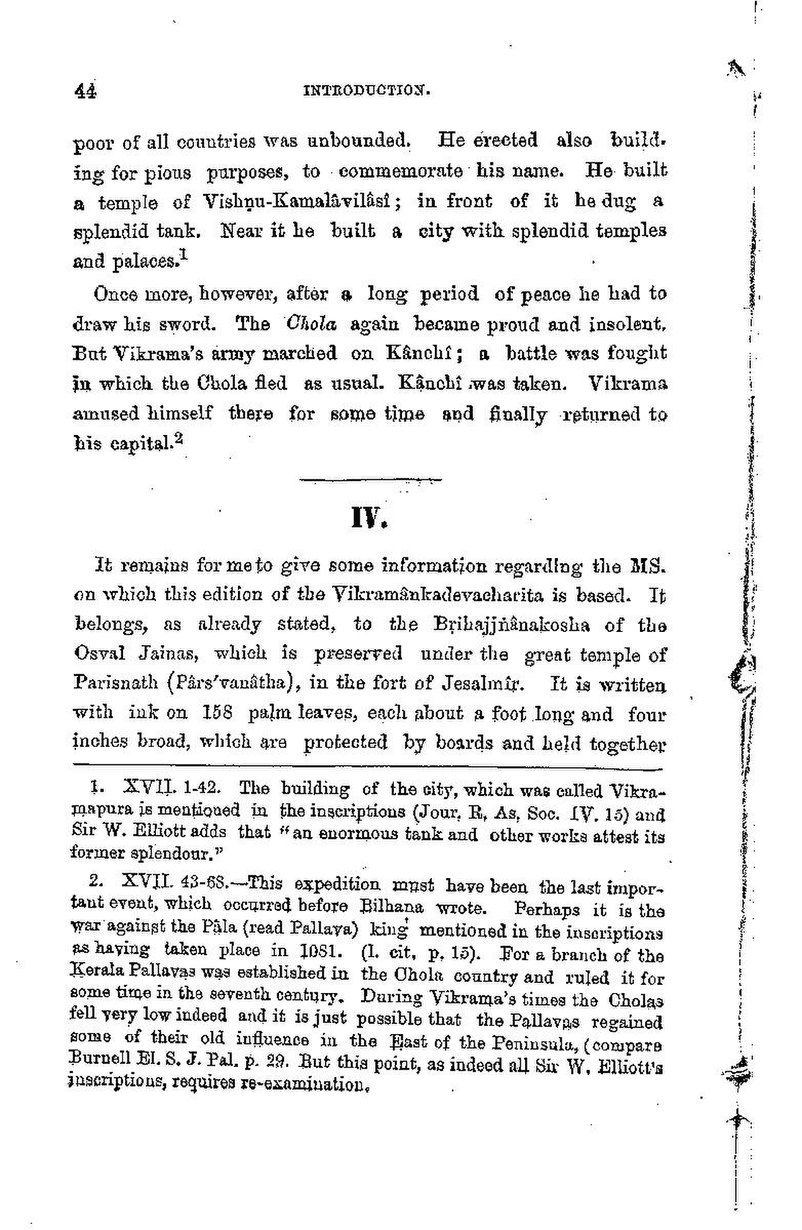44
INTRODUCTION.
poor of all countries was unbounded. He erected also build.
ing for pious purposes, to commemorate his name. He built
a temple of Vishnu-Kamalâvilâsî; in front of it he dug a
splendid tank. Near it he built a city with splendid temples
and palaces.¹
Once more, however, after a long period of peace he had to
draw his sword. The Chola again became proud and insolent,
But Vikrama's army marched on Kânchi; a battle was fought
in which the Chola fled as usual. Kanchi was taken. Vikrama
amused himself there for some time and finally returned to
his capital.²
IV.
It remains for me to give some information regarding the MS.
on which this edition of the Vikramânkadevacharita is based. It
belongs, as already stated, to the Brihajjnânakosha of the
Osval Jainas, which is preserved under the great temple of
Parisnath (Pârs'vanatha), in the fort of Jesalmir. It is written
with ink on 158 palm leaves, each about a foot long and four
inches broad, which are protected by boards and held together
1. XVII. 1-42. The building of the city, which was called Vikra-
mapura is mentioned in the inscriptions (Jour, R, As, Soc. IV. 15) and
Sir W. Elliott adds that an enormous tank and other works attest its
former splendour."
2. XVII. 43-68.-This expedition must have been the last impor-
taut event, which occurred before Bilhana wrote. Perhaps it is the
war against the Pala (read Pallava) king mentioned in the inscriptions
as having taken place in 1081. (1. cit, p. 15). For a branch of the
Kerala Pallavas was established in the Chola country and ruled it for
some time in the seventh century. During Vikrama's times the Cholas
fell very low indeed and it is just possible that the Pallavas regained
some of their old influence in the East of the Peninsula, (compare
Burnell EI. S. J. Pal. p. 29. But this point, as indeed all Sir W. Elliott's
inscriptions, requires re-examination,
पृष्ठम्:विक्रमाङ्कदेवचरितम् - बिल्हण.pdf/४८
एतत् पृष्ठम् अपरिष्कृतम् अस्ति

